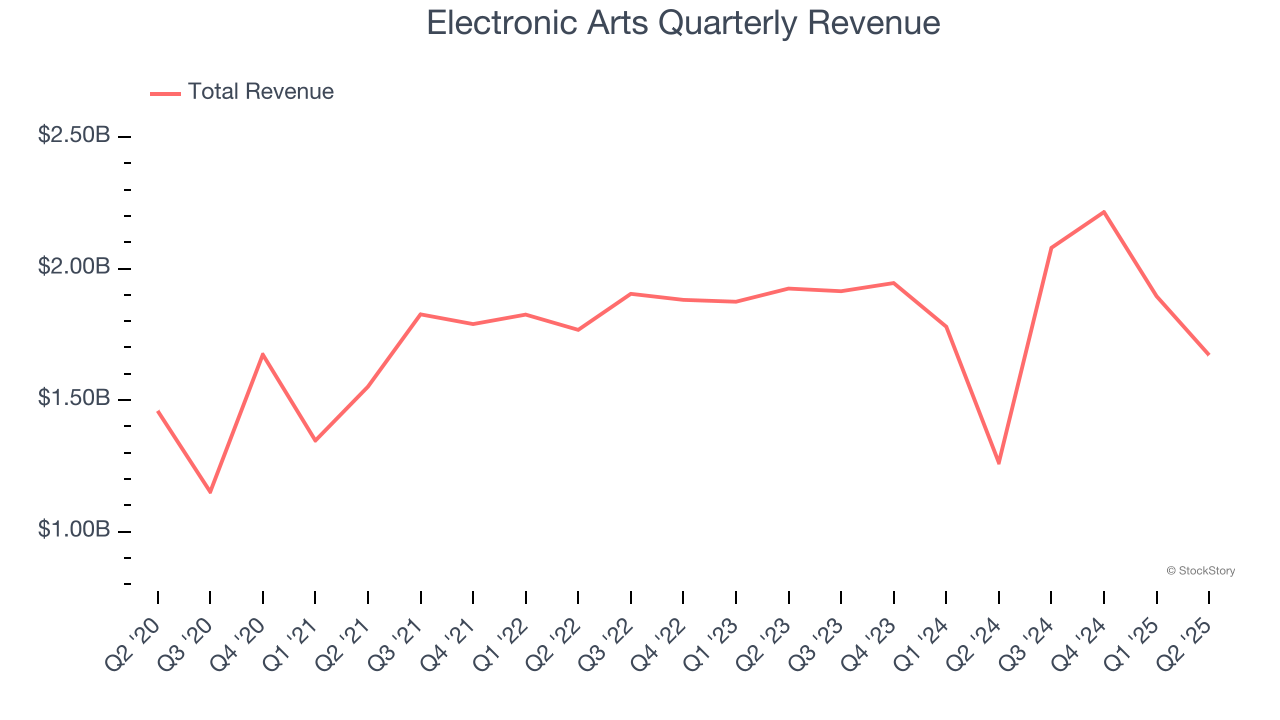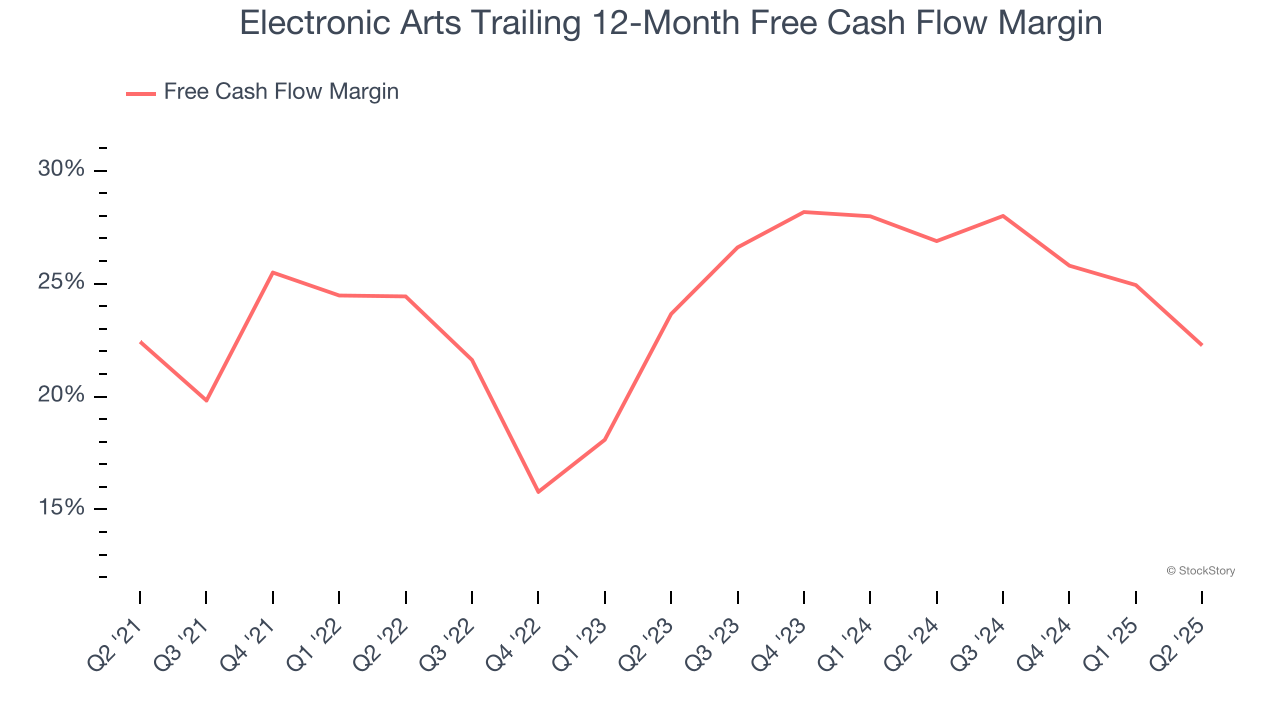
Video game publisher Electronic Arts (NASDAQ:EA) reported Q2 CY2025 results exceeding the market’s revenue expectations, with sales up 32.4% year on year to $1.67 billion. On the other hand, next quarter’s revenue guidance of $1.8 billion was less impressive, coming in 5.9% below analysts’ estimates. Its GAAP profit of $0.79 per share was 23.8% above analysts’ consensus estimates.
Is now the time to buy Electronic Arts? Find out by accessing our full research report, it’s free.
Electronic Arts (EA) Q2 CY2025 Highlights:
- Revenue: $1.67 billion vs analyst estimates of $1.56 billion (32.4% year-on-year growth, 7.4% beat)
- EPS (GAAP): $0.79 vs analyst estimates of $0.64 (23.8% beat)
- The company reconfirmed its revenue guidance for the full year of $7.3 billion at the midpoint
- EPS (GAAP) guidance for the full year is $3.44 at the midpoint, missing analyst estimates by 6.8%
- Operating Margin: 16.2%, down from 28.8% in the same quarter last year
- Free Cash Flow was -$55 million, down from $495 million in the previous quarter
- Market Capitalization: $38.19 billion
“We delivered a strong start to FY26, outperforming expectations ahead of what will be the most exciting launch slate in EA’s history,” said Andrew Wilson, CEO of Electronic Arts.
Company Overview
Best known for its Madden NFL and FIFA sports franchises, Electronic Arts (NASDAQ:EA) is one of the world’s largest video game publishers.
Revenue Growth
A company’s long-term performance is an indicator of its overall quality. Even a bad business can shine for one or two quarters, but a top-tier one grows for years. Regrettably, Electronic Arts’s sales grew at a sluggish 2.9% compounded annual growth rate over the last three years. This was below our standards and is a tough starting point for our analysis.

This quarter, Electronic Arts reported wonderful year-on-year revenue growth of 32.4%, and its $1.67 billion of revenue exceeded Wall Street’s estimates by 7.4%. Company management is currently guiding for a 13.4% year-on-year decline in sales next quarter.
Looking further ahead, sell-side analysts expect revenue to decline by 3.4% over the next 12 months, a deceleration versus the last three years. This projection is underwhelming and implies its products and services will face some demand challenges.
Software is eating the world and there is virtually no industry left that has been untouched by it. That drives increasing demand for tools helping software developers do their jobs, whether it be monitoring critical cloud infrastructure, integrating audio and video functionality, or ensuring smooth content streaming. Click here to access a free report on our 3 favorite stocks to play this generational megatrend.
Cash Is King
Although EBITDA is undoubtedly valuable for assessing company performance, we believe cash is king because you can’t use accounting profits to pay the bills.
Electronic Arts has shown terrific cash profitability, driven by its lucrative business model and cost-effective customer acquisition strategy that enable it to stay ahead of the competition through investments in new products rather than sales and marketing. The company’s free cash flow margin was among the best in the consumer internet sector, averaging 24.4% over the last two years.
Taking a step back, we can see that Electronic Arts’s margin dropped by 2.2 percentage points over the last few years. Continued declines could signal it is in the middle of an investment cycle.

Electronic Arts burned through $55 million of cash in Q2, equivalent to a negative 3.3% margin. The company’s cash flow turned negative after being positive in the same quarter last year, suggesting its historical struggles have dragged on.
Key Takeaways from Electronic Arts’s Q2 Results
We were impressed by how significantly Electronic Arts blew past analysts’ revenue and EPS expectations this quarter. On the other hand, its full-year revenue and EPS guidance missed. Overall, this quarter could have been better. The stock remained flat at $148.19 immediately after reporting.
Should you buy the stock or not? What happened in the latest quarter matters, but not as much as longer-term business quality and valuation, when deciding whether to invest in this stock. We cover that in our actionable full research report which you can read here, it’s free.
